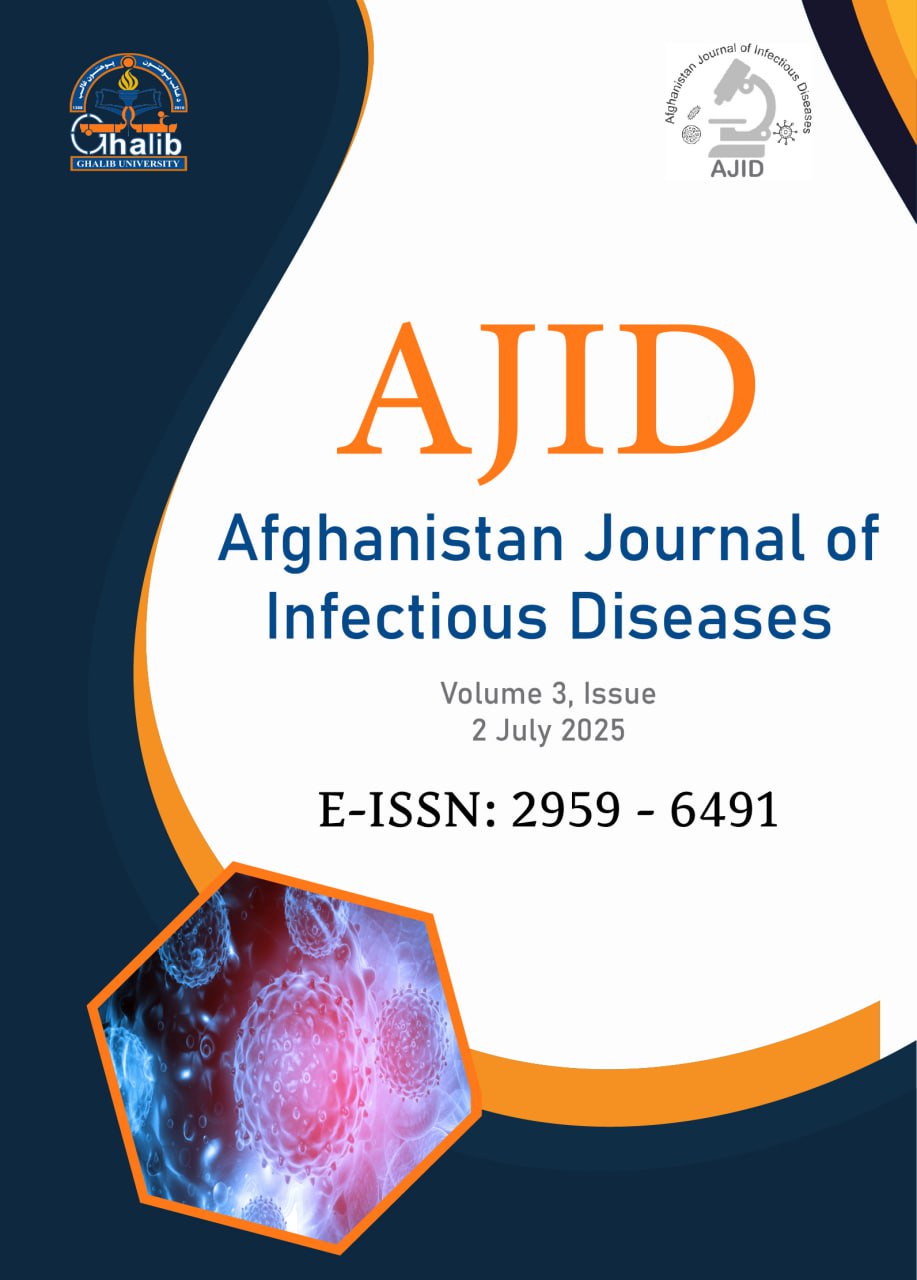Prevalence of Malaria Based on Blood Smear Examination: A Retrospective Study at FCVMLT Clinic, Vom, Plateau State, Nigeria
Main Article Content
Abstract
Background: Malaria is a significant public health issue in Nigeria, contributing to high morbidity and mortality rates, particularly in sub-Saharan Africa. The disease remains a persistent burden, occurring year-round and continuously exposing the population to the risk of infection.
Materials: A preliminary retrospective study was conducted at the clinic of the Federal College of Veterinary and Medical Laboratory Technology (FCVMLT), Vom, from Sep to Oct 2020. Four years of malaria data (2016–2020) were collected from laboratory registration books after obtaining permission from the head of the laboratory. Overall, 2020 patients were screened during this period.
Results: The slide positivity rate for malaria remained relatively stable throughout the four-year period, with only minor fluctuations. Malaria prevalence was consistently high, with seasonal peaks during the rainy season. Among the infected individuals, 827 (75.46%) were males and 269 (24.54%) were females. In 2018, the highest infection rate among adults (above 17 yr) was recorded at 578, while the lowest adult infection rate was in 2016, with 29 cases. For children (<17 yr), the highest infection rate was 639, and the lowest was 91, also in 2016.
Conclusion: The study demonstrates the persistent prevalence of malaria in the area, with notable seasonal variations. It is recommended that greater efforts be made to control the disease through public education on its dangers and the implementation of preventive measures.
Article Details

This work is licensed under a Creative Commons Attribution 4.0 International License.
References
Roll Back Malaria Partnership to End Malaria. (2021). Progress and Impact Series: Focus on Nigeria. Available at: https://endmalaria.org/our-work/progress-impact-series
World Health Organization (WHO). (2021). World Malaria Report 2021. Geneva: WHO. Available at: https://www.who.int/teams/global-malaria-programme/reports/world-malaria-report-2021
Katsayal UA, Obamiro KO. In-vivo Antiplasmodial Activity and Phytochemical Screening of Ethanolic Extract of the Leaves of Cissampelos Mucronata. Nigerian Journal of Pharmaceutical Sciences, 2007, 6(2), 111-115.
Gubler DJ, Reiter P, Ebi KL, Yap W, Nasci R, Patz JA. Climate variability and change in the United States: Potential impacts on vector-and rodent borne diseases. Environ Health Perspect, 2001, 109 (Suppl 2): 223-233
Lemessa A, GIS and Remote Sensing Based malaria risk mapping in Fentele Woreda, East Shao zone, Ethiopia. An M., Sc., thesis submitted to the School of Graduate Studies Addis Ababa University, Ethiopia, 2011
Kasasa S, Asoala V, Gosoniu L, Anto F, Adjuik M, Tindana C, et al. Spatio-temporal malaria transmission patterns in Navrongo demographic surveillance site, northern Ghana. Malaria J, 2013, 12:63
Kumar DS, Andimuthu R, Rajan R, Venkatesan MS. Spatial trend, environmental and socioeconomic factors associated with malaria prevalence in Chennai. Malaria J, 2014, 13:14
Tatem AJ, Rogers DJ, Hay SI. Global transport networks and infectious disease spread. Adv Parasitol, 2017, 62, 293–343. https://doi.org/10.1016/S0065-308X(05)62009-X
McMichael AG, and Martens, WJM. The health impacts of global climate: Grappling with scenarios, predictive models and multiple uncertainties. Ecosystem Health, 1995, 1(1), 23-33
Haque U, Hashizumen M, Glass GE, Dewan AM, Overgaard HJ, Yamaota T. The role of climate variability in the spread of malaria in Bangladeshi highlands. PLoS One, 2010, 5: e14341.
Diiro GM, Seymour G, Kassie M, Muricho G, Muriithi BW. Women’s empowerment in agriculture and agricultural productivity: Evidence from rural maize farmer households in western Kenya. Plos One, 2016, 11(12), e0167821.
Deribew A, Dejene T, Kebede B, Tessema GA, Melaku YA, Zeynudin A. Malaria and under-nutrition: A community-based study among under-five children at risk of malaria, south-west Ethiopia. Public Health, 2010, 124(8), 540–545.
Bouma MJ, van der Kaay HJ, The influence of changing immunity on malaria morbidity and mortality. Ann Trop Med Parasitol, 1996, 90(3), 245–260.
Tolera M, Abate A, Birhanu Z, Chali W, Alemu A. Knowledge, attitudes, and practices towards malaria and associated factors in Areka Town, Southern Ethiopia: Community-based cross-sectional study. J Trop Med, 2017; 1–8.

